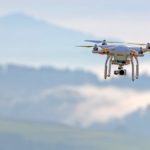Dr Donough Wilson looks at why artificial intelligence and new thinking are set to deliver ultra-safe next-generation airliners and military aircraft – and finally eliminate pilot error in aviation accidents.
The number one flight safety problem in aviation is the human factor – the pilot, and it always has been because humans are prone to error. Most times it doesn’t matter and the issue is quickly resolved but it’s that tiny percent of times when it does matter that causes the problems.
This is why controlled flight into terrain (CFIT) and loss of control remain the predominant causes of loss of life in aviation worldwide, and why pilot-error mission failure remains a problem for the military.
One focus of future thinking has been to remove the pilot altogether and design fully autonomous robotic aircraft with no-one physically at the controls. The technology to achieve this is available now. However, would people really be happy getting onto an aircraft with no pilot?
The alternative
There is an alternative to the manned vs unmanned argument, and one which combines the best of both. The challenge is not taking the pilot out of the process of flight – the challenge is taking pilot error out of the process of flight.
Artificial intelligences does not make errors like humans do. Having a single pilot and a highly intelligent ‘smart’ aircraft designed for shared control responsibility, and using AI and drone flight control and navigation technologies to deliver absolute ‘error free’ flight, could be a more attractive proposition for passengers, and airlines.
Current flight deck instruments are designed to present data and various information forms for the pilot to read, extract and use. It is essentially a dumb system – the instruments provide information for the pilot to interpret – and most errors in reading or interpretation go unchallenged, as do most erroneous flight control actions that don’t cause a disaster.
With the technology and sensors now on board every commercial or military platform, the aircraft actually knows exactly where it is in all three dimensions for every moment of the flight – even up until the crash.
The solution isn’t really that radical – have artificial intelligence work with and alongside a single pilot, as a team, comparing what the aircraft is actually doing to what it should be doing, to keep the flight 100% safe and on plan in all three dimensions, and for every second of the flight.
Roles
The objective is a straightforward division of roles, with the aircraft itself becoming a fully co-participating partner in the control, flight management and decision-making process – with an interest (albeit artificial) in its own survival and the safe outcome of the flight.
Working with and alongside the pilot, the AI monitors every phase of the flight and ensures absolute compliance and flight safety, the pilot and aircraft each having distinct responsibilities.
Even before engine start-up, all of the appropriate narrative elements – speeds, sector altitudes and navigation tracks for the entire route – have been pre-defined and are loaded into the AI active data store.
The data for every route the airline flies is permanently stored in each aircraft, and loaded as the AI’s active flight by entering the company flight number. The AI will then factor in the manufacturer’s exact Flight Manual performance and, handling figures for the aircraft at its current loaded configuration, adjust the performance figures for the departure runway, METAR, route winds, and destination TAF, and brief the pilot.
It will then monitor the flight and compare exactly where the aircraft is – in all three dimensions (plus time), against where it should be – even in the most challenging and adverse meteorological extremes.
The aircraft’s AI completes all of the tasks where mental calculations or visualisation and positional decisions are required – all areas where pilot error could detrimentally affect flight safety. It ensures absolute adherence to plan, flight accuracy and optimum fuel economy against the company and regulatory required parameters.
The pilot, of course, still has overall command, but the aircraft shares responsibility, and more importantly, has primary authority for maintaining 100% error-free speeds and altitudes, monitoring and maintaining completely stall-safe angle-of-attack, and ensuring that the flight follows an absolute guaranteed, CFIT-safe 3D trajectory.
In this scenario, pilot and aircraft would be working together, with drone technology augmenting flight accuracy, and the artificial intelligence ensuring absolute safety.
So by self-monitoring progress, phase by phase, the aircraft can recognise any pilot error at a very early stage, advise the pilot, and help to correct the error long before it becomes a serious issue.
In the case of a hijack (or other flight-critical event where the pilot isn’t responding to corrective cues), the aircraft AI could intervene – and if absolutely necessary, take control, divert, and land fully autonomously, whilst taking instructions from air traffic control.
Smart cockpit
For this system, pilot-interpreted instrument forms are no longer appropriate. Instead, the human/computer two-way interface between the pilot and aircraft is a completely new form of intuitive, visually integrated, single wide-screen situational awareness display, using augmented reality to create a virtual world via a highly accurate 4D (x, y, z + time) point-cloud narrative of the airspace and entire route.
VIVID/futureVision has designed a full-width, 24-bit colour, high definition transparent RGB HUD, laminated into the entire flight deck (or cockpit) windscreens, including the side window areas – enabling the aligned overlay of flight control, navigation, and low light and IR-enhanced augmented imagery to be presented congruently in the pilot’s line of sight.
These displays – which do not require any interpretation or reading – present everything the pilot needs in a clear, plain manner, which cannot be misread, and with elements presented in varying levels of intensity, depending on their current pertinence to the flight or mission.
This new thinking and tools are opening the way for safe, extremely accurate flight, with better fuel economy, the minimum of environmental pollution and, at last, a complete end to the risk of pilot error accidents, and all the horrific implications that they entail.
Dr Wilson will discuss this topic in more detail at the inaugural FINN Sessions at Farnborough Airshow next month.

